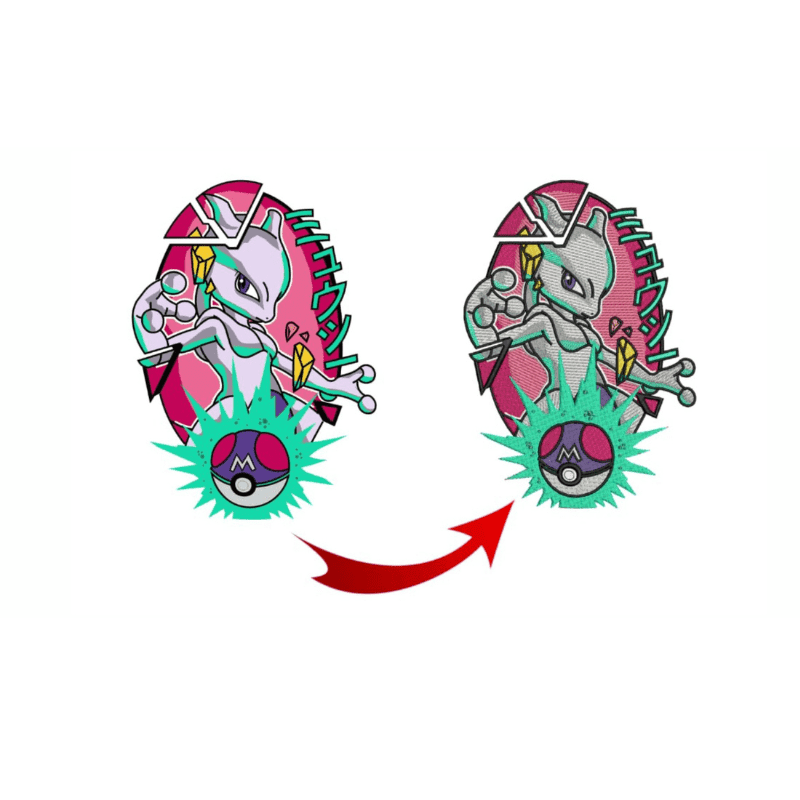Professional Digitizing for Embroidery: Fast and Reliable Service
Professional Digitizing for Embroidery: Fast and Reliable Service
Blog Article
Mastering the Needlework Digitizing Refine: Your Ultimate Guide
Needlework digitizing is a precise craft that needs accuracy and expertise to equate detailed designs into electronic layouts for device needlework. As craftsmens start this trip to master the needlework digitizing procedure, a comprehensive understanding of the fundamentals establishes the foundation for quality. Past the basic understanding exists a world of sophisticated software program, specialized devices, and nuanced methods waiting to be explored. By diving into the subtleties of digitizing, one can open a world of creative possibilities and raise their embroidery jobs to new elevations.

Comprehending Needlework Digitizing Fundamentals
Needlework digitizing essentials form the foundation upon which intricate designs are translated into machine-readable formats for accurate sewing. This preliminary action in the needlework digitizing process is vital for making sure that the final stitched product is a loyal representation of the original design. Understanding embroidery digitizing basics involves realizing key principles such as stitch kinds, sew direction, density, padding, and draw payment.
Sew kinds play a vital function in identifying the visual and textural outcome of the stitched style. By choosing the appropriate stitch type, whether it be satin, fill, or running stitch, digitizers can attain the wanted effect and enhance the total high quality of the embroidery. In addition, sew direction affects the flow and dimension of the layout, while density determines the spacing and insurance coverage of the stitches.
In addition, rug stitching provides security to the design by safeguarding the material and preventing distortion throughout the embroidery procedure. Pull settlement is one more vital factor to consider to combat the natural tendency of textile to agreement when sewn. Understanding these needlework digitizing essentials is fundamental for developing professional-quality embroidered items.
Selecting the Right Digitizing Software Program
Choosing the ideal digitizing software is an essential decision that considerably influences the performance and quality of the embroidery digitizing process. Digitizing for Embroidery. When selecting the appropriate digitizing software, it is important to consider elements such as the complexity of styles you intend to develop, the user-friendliness of the software application, the degree of consumer support supplied, and the compatibility with your embroidery machine
There are different digitizing software choices offered in the marketplace, varying from standard programs for newbies to advanced software program for expert digitizers. Some prominent options include Wilcom EmbroideryStudio, Hatch Needlework Software, and PulseID. These software plans use a large range of devices and functions to assist you develop detailed layouts effortlessly.
Prior to deciding, it is recommended to explore the different software program alternatives with complimentary trials or demos to determine which one best suits your needs. In addition, reviewing evaluations and seeking recommendations from seasoned digitizers can give beneficial insights into the toughness and weak points of each software application package (Digitizing for Embroidery). By meticulously reviewing your requirements and contrasting the functions of different digitizing software program, you can make an educated choice that boosts your needlework digitizing workflow
Digitizing Devices and Methods

Optimizing Design Setup for Needlework
Grasping the complexities of layout settings is basic in attaining optimum outcomes in the needlework digitizing procedure, building upon the structure laid by comprehending digitizing devices and methods. When click to read more optimizing style setups for embroidery, it is important to take into consideration elements such as stitch kind, density, padding, pull settlement, and registration. Enrollment settings line up various elements of the style properly, maintaining general layout integrity.

Troubleshooting Common Digitizing Issues
When encountering usual digitizing issues during the embroidery process, it is essential to comprehend the root causes and apply effective options without delay. One common issue is stitch thickness concerns, where stitches might be as well thick, triggering the fabric to tighten, or too sparse, bring about spaces in the design. Readjusting the stitch density setups in the digitizing software application can assist solve this issue.
One more frequent obstacle is string breaks throughout the needlework procedure. This can happen as a result of different factors such as wrong tension setups, plain needles, or utilizing low-grade string. Making certain proper maintenance of the embroidery device, including routine needle modifications and tension modifications, can lessen the event of string breaks.
Moreover, design registration errors can result in misaligned aspects within the needlework style. Inspecting the style positioning in the digitizing software application and making needed changes prior to sewing can assist in avoiding this problem. By dealing with these common digitizing issues promptly and efficiently, you can guarantee a smoother embroidery process and high-grade completed products.
Final Thought
To conclude, mastering the embroidery digitizing procedure needs a solid understanding of the basics, the appropriate selection of software find out application, and understanding of tools and strategies. Maximizing style settings and repairing usual digitizing concerns are essential action in making certain top notch embroidery outcomes. By adhering to these steps diligently, one can attain accuracy and efficiency in the digitizing procedure.
Report this page